Start 14-Day Trial Subscription
*No credit card required
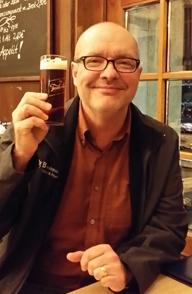
Hugh Sisson of Heavy Seas Beer
Hugh Sisson, founder of Heavy Seas Beer, definitely makes the cut on any list of the most influential American craft beer pioneers. Hugh guided his fledgling brewery through the troubled waters of the late '90s when the first craft beer "bubble" burst. In his words, "In those days, we were playing the game not to lose, instead of playing the game to win."
Throughout the years, Sisson has employed creativity, business smarts, adaptability and a deep adoration of magnificent beer to guide his brewery plan and remain successful, even in today's wild and wacky craft beer market. For almost 35 years, Sisson has been instrumental in introducing craft beer to the Mid-Atlantic region, influencing brewery legislation and setting the tone for today's craft beer culture.
Birthing a Brewpub
In 1980, fresh out of graduate school, Sisson got his start in the bar/restaurant business by running a little bar in Baltimore that his dad had bought and renovated five months earlier. He quickly figured out that he had to come up with something creative and different for the bar to stand out and grab the attention of potential customers. Sisson developed an interest in beer while visiting London as part of his undergraduate studies, so he decided to turn Sisson's pub into a beer-focused bar.
Sisson recalls, "Most of the interesting selections we could get back in the day were imported beers, and Sisson's featured 120 beers – mostly imports. We were actually Maryland's first draft Guinness account. So, fast-forward a couple of years, and my father and I wondered what would happen if we could make our own beer at the pub."
Thus began months of research for Hugh Sisson into the complicated world of brewery equipment, plumbing, ingredients, fermentation and serving techniques. "We didn't know what the hell we were doing," he recalls. "But by 1986 we started to realize that installing a brewery in the pub was doable, just not legal in the state of Maryland. With the help of a local legislator, we introduced a state brewpub bill in 1987, thinking full well that it would fail. When the bill actually passed, we had to get on the stick to beat the competition of other startups, and in August of 1989, we brewed our first beer and became Maryland's first brewpub."
Charting a New Course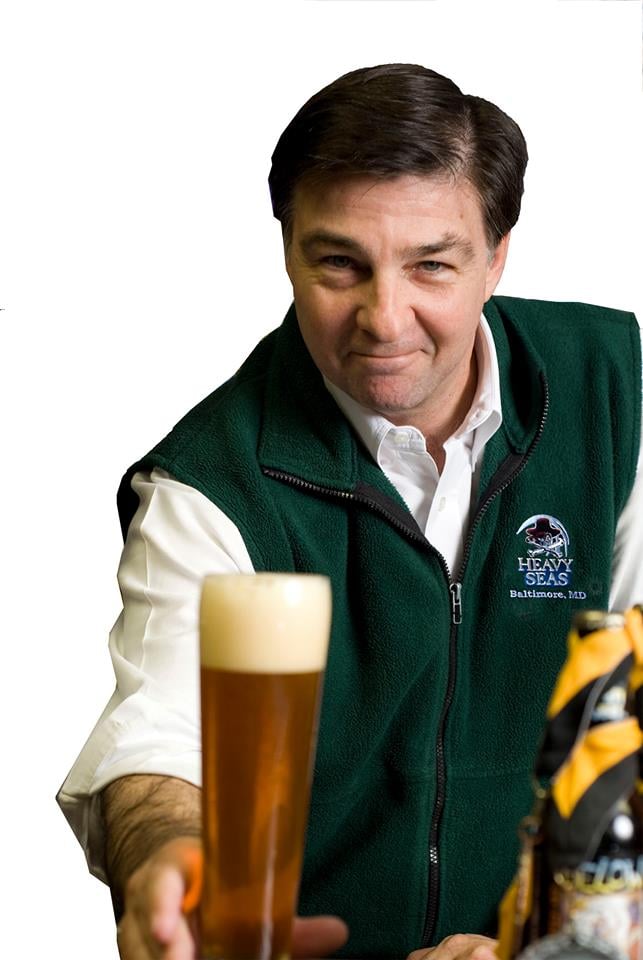
Hugh stayed with Sisson's brewpub for five more years but left in 1994 to focus entirely on beer production. It took most of 1995 to raise substantial capital, purchase and install equipment, and hire a staff, but Clipper City Brewing Co. (now called Heavy Seas) brewed its first batch of beer on December 8, 1995.
Sisson made the decision early on to focus on running the business, instead of making the beer. "I never did any of the brewing at Clipper City and Heavy Seas," he says. "I really missed the hot, sweaty brew sessions at the pub that rewarded me with a tank of fermenting beer at the end of the day, but I figured with Clipper City it was important for me to stick to spreadsheets, finances and sales."
Sisson's passion for beer began with classic U.K. styles.
With the impressive growth of craft beer in the early '90s going flat for several years starting around 1996, Sisson found the early days at Clipper City quite a challenge. The brewery struggled for distribution outside of their own backyard around Baltimore, and Sisson realized that most of the local beer scene lacked a level of sophistication in regard to beer styles. "I had to dummy down what I was doing with products as a way to survive," Sisson points out. "Clipper City's brands were classic styles and lighter-weight beers because the market just wasn't into big beers at the time. In 1997, we even started contract brewing for other breweries just to keep the doors open. It was all about survival."
Around 2002, American craft beer numbers began to show improvement, but Sisson noticed that a type of "Darwinian attrition" had taken place, with many breweries being lost during the lean times. "When the market bounced back, the quality of the beers at the surviving craft breweries was really good," he says. "I wanted to start making more adventurous beers, but I didn't think these would be appropriate under the Clipper City name."
Heavy Seas on the Horizon
Sisson premiered his Heavy Seas line in 2003 to showcase innovative, high-gravity, experimental brews, and by 2010 realized it was time to concentrate totally on Heavy Seas. Clipper City brands were eliminated, all contract brewing was phased out and Sisson says that business "finally became fun."
Under the Heavy Seas theme, total sales expanded 35 percent in 2010 and 55 percent the following year. In 2012, the brewery hit serious capacity constraints and struggled with demand throughout 2014. "We basically had to rebuild the facility from the bottom-up while staying in business – which is not something I would recommend," notes Sisson. "With the expanded capacity, we should finish 2015 up around 20 percent. In the grand scheme, we're a happy, nice little company, and we make really good, consistent beers."
In regard to the early days of Clipper City, Sisson recalls a greater focus on traditional beer, with most American craft brewers basing their beers on classic European styles. "We were kind of doing our beer apprenticeship in this country," he says. "But in the last few years, I think there's been an insane explosion of experimentation and pushing the limits for the sake of pushing the limits. There are remarkably interesting, good beers being produced these days, but with all the trendy sour, gose, peanut butter and M&M beer popping up, I still try to execute variations on classic themes at Heavy Seas, and I think we do this well. When people ask me when I'm going to make sour beers, I tell them that I've spent years trying to make sure my beers don't sour."
Sisson seems a bit concerned with the current, exponential expansion of craft breweries when he relates, "It seems like there are two breweries opening every day, and not all of them are making great beer. I live in a business environment where if someone doesn't ask for a second pint, I lose. We'll never win a medal for Loose Cannon IPA, because it's not bitter enough for BJCP specs, but our customers like the fact that it's floral, hoppy, aromatic, drinkable, and makes you want another pint."
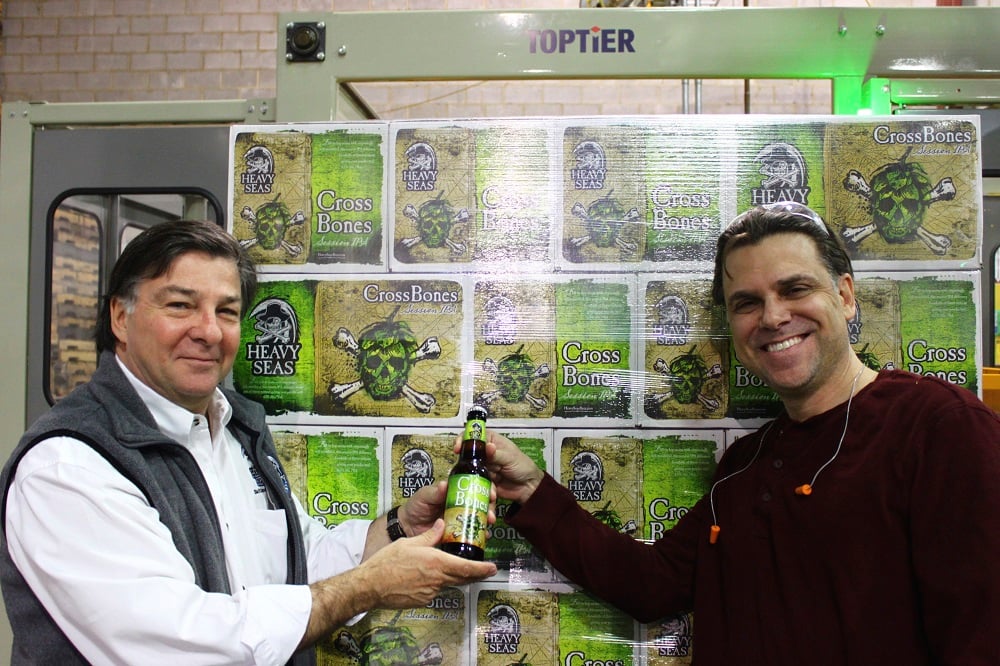
Sisson and Heavy Seas brewmaster Christopher Leonard share a CrossBones Session IPA.
A Taste for the Classics
Sisson cut his beer-drinking teeth in England and readily admits his affinity for classic U.K. pale ales, bitters and malty IPAs. "These styles are where I live. I do like Belgian ales but am a little 'Belgianed out' these days. I also still have a warm spot in my heart for a classic, well-styled pilsner."
Sisson indulges his pilsner fetish by planning a March, 2016 release of a new Heavy Seas Pounder Pilsner that will include classic pilsner ingredients such as European malts, noble hops and a traditional lager yeast strain. He sees a perfect opportunity at present to make interesting lager beers that should stand out in today's sea of IPAs. In shooting for an ABV around 4.5 - 5 percent, Sisson foresees Pounder as a crisp, immensely appealing session beer that will make a perfect alternative to drinking four Loose Cannons in a sitting – something he calls "a really bad idea."
Walking a line between making beers that he wants to drink versus producing beers that the market demands forms a constant challenge for Sisson. As a seasoned business owner, Sisson tends to focus on the demands of consumers. "Some new breweries seem to have lost sight of the fact that this is a business," Sisson believes. "You own a commercial brewery not just for pure artistic expression, otherwise you just have an expensive hobby. You don’t get to make the artistic beers unless you make a living off the main commercial brands. How can you have any pudding if you don't eat your meat?"
Sisson saw his Heavy Seas Desert Island series as an enjoyable and creative outlet for his brewers, but sales and marketing expectations for these special beers were limited. He does emphasize the importance of including a creative, artistic spin on every beer that comes from Heavy Seas, and notes that making outstanding classic styles is a challenging process with less room for error.
Innovation & Relevance
When discussing how to keep the Heavy Seas brands relevant in today's crazy craft beer environment, Sisson stresses the importance of consistent innovation. "We retire a few brands, and add new, interesting beers each year. We have to be willing to reinvent ourselves, yet always go to market with realistic strategies."
Regarding the future, Sisson remarks, "Our focus is to dig in deeper in our current core market of about ten states these days. It can be hard to get placement in bars because of all the new breweries fighting for tap handles. When the market stabilizes soon and the dust settles, we'll seize the opportunity to dive into new markets."
Sisson explains that having a slew of new breweries on the scene does help with influencing governmental craft beer policies. "I started the Brewers 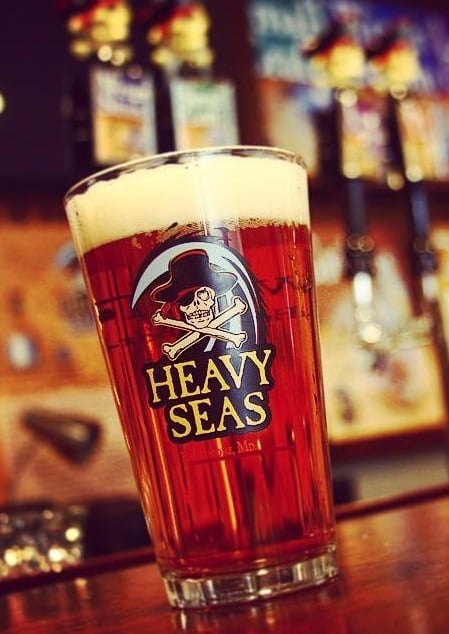 Association of Maryland years ago and am still heavily involved, but I attend meetings these days and only know about one-third of the brewers. All these new people are making the association stronger, and our industry is getting better at being politically savvy. We definitely have more clout."
Association of Maryland years ago and am still heavily involved, but I attend meetings these days and only know about one-third of the brewers. All these new people are making the association stronger, and our industry is getting better at being politically savvy. We definitely have more clout."
When asked to comment on a few recent Heavy Seas beers that made him proud, Sisson immediately mentions CrossBones Session IPA. "Even with 4.5 percent ABV, this hoppy beer came out complex and extremely drinkable. Also, I enjoyed our Blackbeard’s Breakfast Barrel-aged Imperial Coffee Porter that was infused with dark Sumatran coffee and subtle bourbon barrel notes. With our spirit barrel-aged beers, we like to take a 'less is more' approach to achieve a nuance, but not turn the beer into a glass of bourbon. The coffee was delicate and smooth with a little oaky vanilla, and none of the flavors reached out and grabbed you by the nuts. I also love our Deep Six Porter – a classic U.K.-style at 6.5 percent ABV. It's smooth with light coffee and dark chocolate tones, and the Maris Otter malt provides a creamy, malt-focused texture that's backed by supportive hop bitterness."
A Passion for the Profession
Cask ale ranks as another passion for Sisson, who admits that selling cask-conditioned beer is more of a labor of love than a viable business opportunity. "We sell around 150 casks a month," Sisson points out. "In terms of cost of labor and some theft of our cask shells, we don't make any money from cask ale, but having this special beer in the market generates tremendous buzz. Cask ale is the finest expression of draft beer, in my opinion."
When asked if he still enjoys the beer business after surviving the roller coaster ride over so many years, Sisson replies, "Yeah, I still have fun, but it takes a huge amount of energy. For example, I'm out for the next five nights actively promoting our beer. It's really a younger person's game, and I'm in my early 60s, so at some point I need to start playing a more strategic roll and less of an active, ambassadorial role. I don't know if I can be like my buddy Jim Koch of Sam Adams – he's going to be out there kissing babies, shaking hands and selling his beer until they put him in the ground. Not a chance for me. I want to retire one day and volunteer my time helping young business developers not make the mistakes I made."
Sisson admits that doing public relations for Heavy Seas can be both rewarding and full of surprises. He recalls a holiday beer tasting at a large bar in DC with ten different beers being introduced by representatives from ten breweries. "We had a cask of Winter Storm," notes Sisson. "When it was my turn, I went up and described the beer to the crowd, but when I was served a pint, the beer had no resemblance to the beer I just described – other than having the correct color. I thought, 'Holy shit, how did we get the wrong product?' Jason Oliver with Devils Backbone came up next with a beer already in hand and told the MC that this was not his beer. Since mine was the only beer in cask form, I have no idea how the servers switched our two beers, but I had to get back up and tell the crowd that everything I just said goes with the next beer. There's never a dull moment in this business."
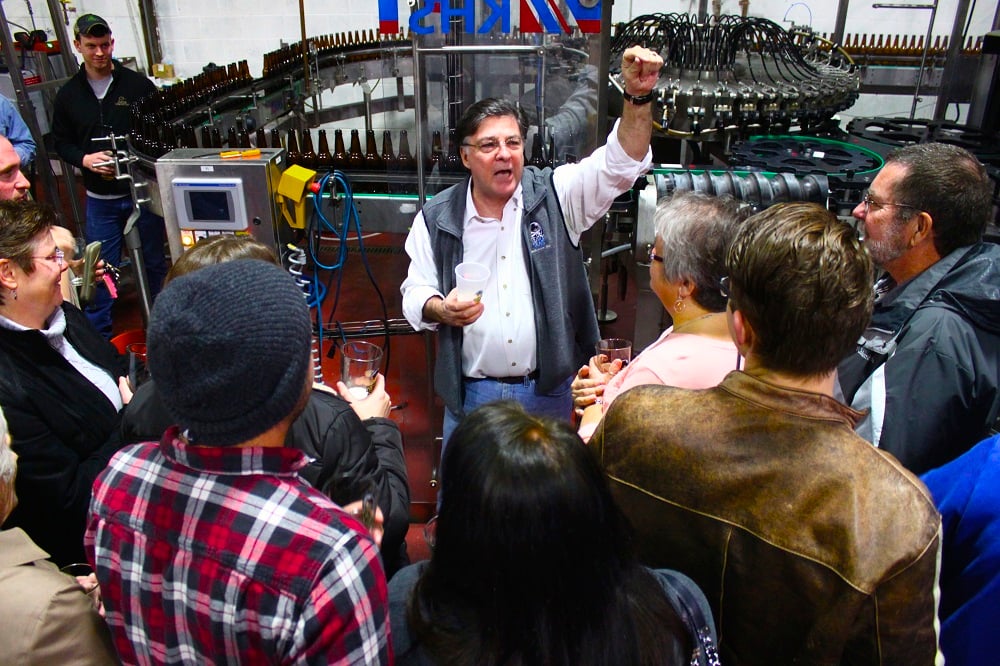
(Photos Courtesy Heavy Seas)



